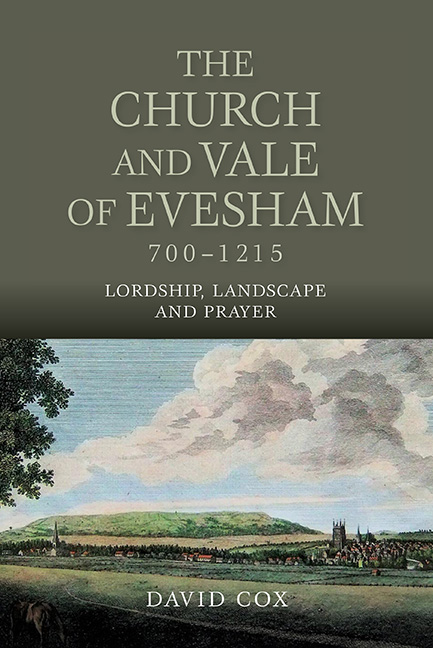Book contents
- Frontmatter
- Dedication
- Contents
- List of Illustrations
- Preface
- Timeline
- List of Abbreviations
- Part I From Minster to Abbey (701–1078)
- Part II Abbot Walter (1078–1104)
- Part III Twelfth-Century Themes (1104–1215)
- Afterword
- Appendix: The Abbots of Evesham to 1215
- Select Bibliography
- Index
- Miscellaneous Endmatter
- Frontmatter
- Dedication
- Contents
- List of Illustrations
- Preface
- Timeline
- List of Abbreviations
- Part I From Minster to Abbey (701–1078)
- Part II Abbot Walter (1078–1104)
- Part III Twelfth-Century Themes (1104–1215)
- Afterword
- Appendix: The Abbots of Evesham to 1215
- Select Bibliography
- Index
- Miscellaneous Endmatter
Summary
Saints and the civil war
ABOVE all the saints stood the Virgin Mary, and Evesham abbey felt especially close to her in the early twelfth century. For 100 years or more the house's existence had been attributed to her original intervention in the days of Eof and St Ecgwine, and the abbey therefore inferred that it would always be under her special protection. Abbot Walter's new crypt became a focus of Evesham's devotion to the Virgin, probably in or before the early twelfth century, and although the abbey had no relics of her she did have her altar, which could stand there in calm detachment from the liturgical activities and saints’ relics in the church above. The abbey also sought ways of drawing attention to her in the outside world, where it may have hoped to win some reflected glory.
As a public tribute to its heavenly patron, the abbey produced a compilation of miracle stories associated with the Virgin. It was begun some time after c.1121 by the monk Dominic, who collected together fourteen tales of her posthumous miracles. He culled them from scattered sources, mostly of continental origin, and only one of the stories is associated with Evesham itself. But his intention, as with all his writings, was to celebrate a saint who was especially important to his own house. Dominic is last mentioned in 1133 and probably never knew that by the mid-twelfth century his Evesham collection would be amalgamated with two collections from elsewhere. As a comprehensive ‘Miracles of the Virgin’ the composite work created a literary genre that would permeate western European culture during the rest of the twelfth century and well beyond. One reason why the combined collection enjoyed such wide diffusion was that it did not shed glory on any one place, as did the usual saint's vita, but instead had a consistent focus on the person of the Virgin. Dominic could not have foreseen the international appeal of the work to which he had unwittingly contributed; his only desire in compiling the miracles had been to glorify the patron of his own abbey.
- Type
- Chapter
- Information
- The Church and Vale of Evesham, 700-1215Lordship, Landscape and Prayer, pp. 167 - 175Publisher: Boydell & BrewerPrint publication year: 2015

